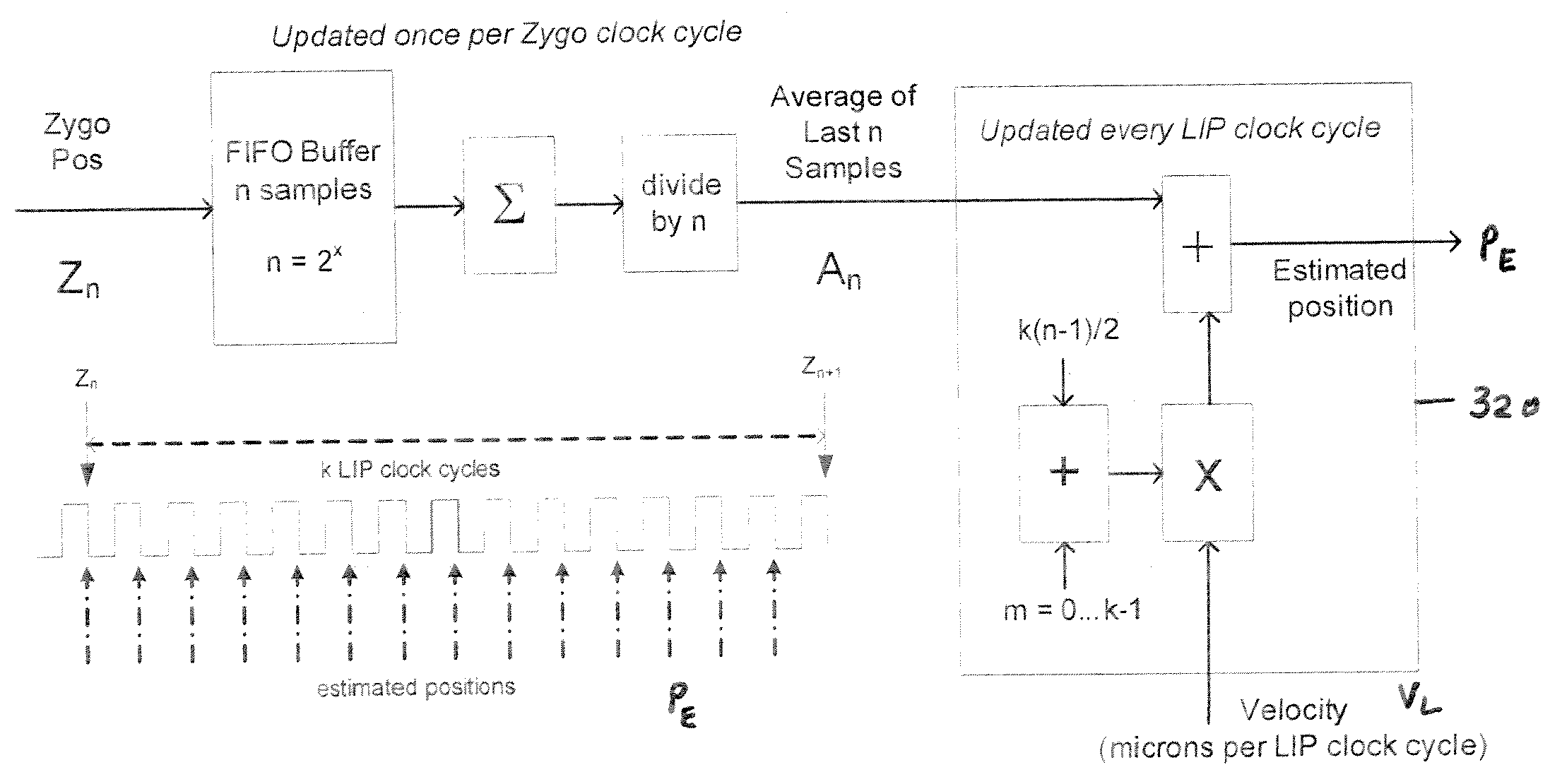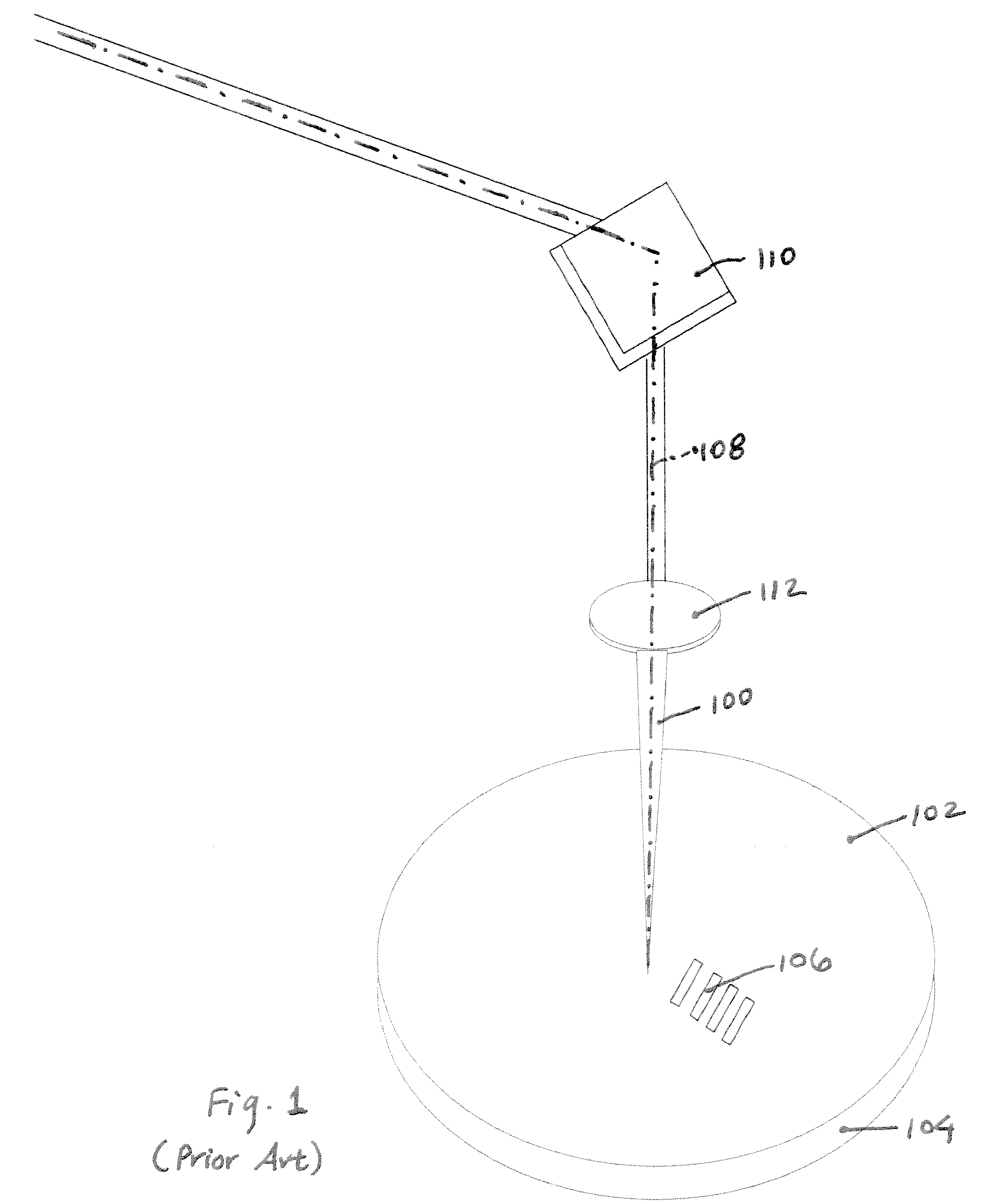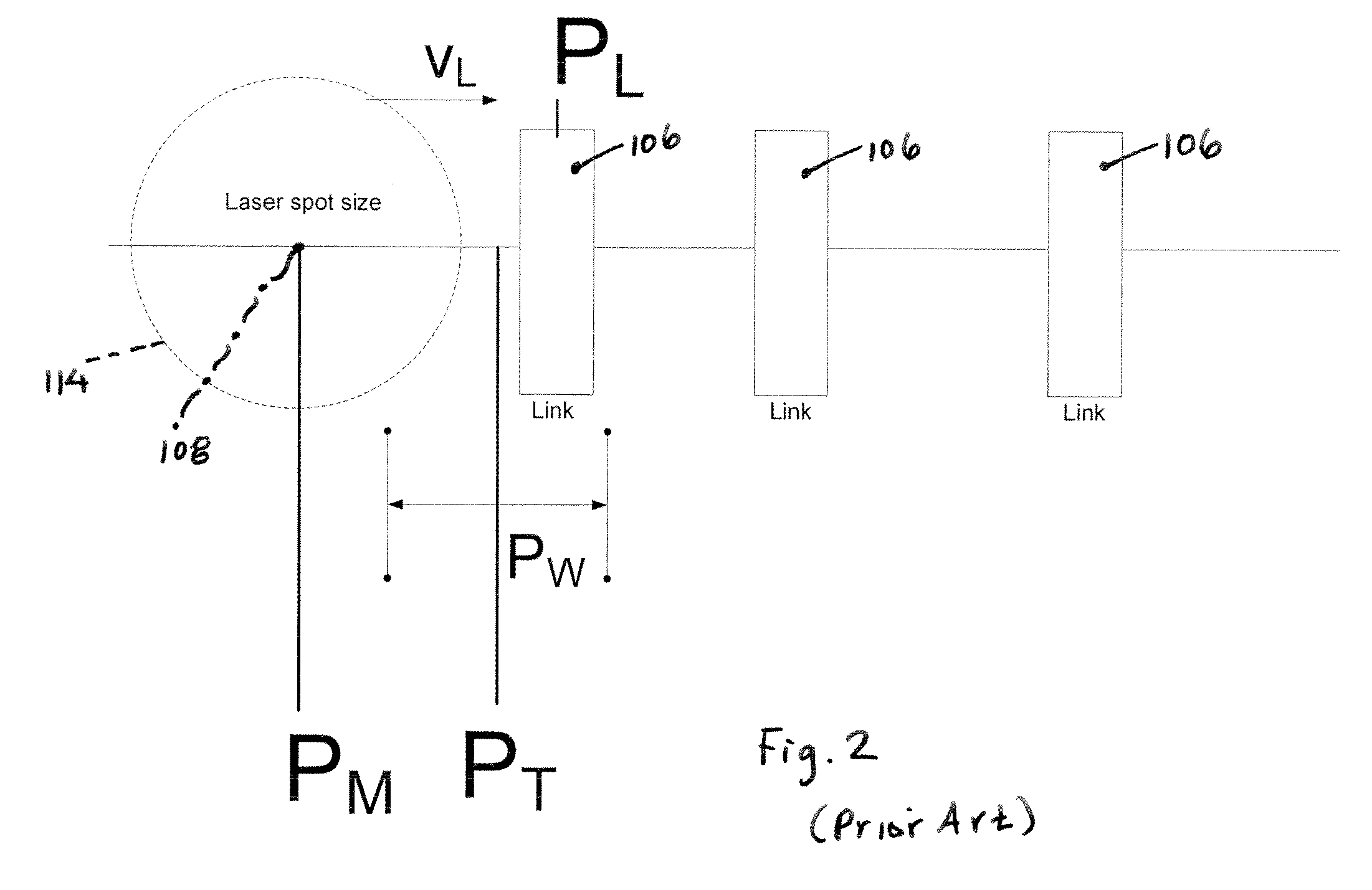Use of predictive pulse triggering to improve accuracy in link processing
a pulse generation and pulse technology, applied in the field of pulse laser technology, can solve the problems of affecting the accuracy of link processing, and reducing the ability to accurately measure the position of the laser beam and trigger the generation of a laser pulse to target a desired link, so as to achieve the effect of improving system accuracy
- Summary
- Abstract
- Description
- Claims
- Application Information
AI Technical Summary
Benefits of technology
Problems solved by technology
Method used
Image
Examples
Embodiment Construction
[0015]FIG. 1 depicts a pulsed laser beam 100 directed along a propagation axis toward the surface of a semiconductor wafer 102. Wafer 102 is positioned on a moveable support or stage 104. Features on the wafer surface include rows of target structures 106 to be processed by a laser beam 100. The location of a beam propagation axis 108 of laser beam 100 may be shifted relative to target structures 106 by controlling optical components such as mirrors 110 and lenses 112 capable of redirecting beam propagation axis 108, as well as through motion of support 104.
[0016]The comparative advantage of the PPT method over a standard triggering methodology based on measured position data is described below with reference to FIGS. 2 and 3 in connection with triggering the generation of a laser beam pulse in a link processing system. FIG. 2 depicts laser beam axis 108 moving along a row of target structures or links 106, in which some of links 106 are specified to be severed. Beam axis 108 define...
PUM
| Property | Measurement | Unit |
|---|---|---|
| Time | aaaaa | aaaaa |
| Electrical conductor | aaaaa | aaaaa |
| Velocity | aaaaa | aaaaa |
Abstract
Description
Claims
Application Information
 Login to View More
Login to View More - R&D
- Intellectual Property
- Life Sciences
- Materials
- Tech Scout
- Unparalleled Data Quality
- Higher Quality Content
- 60% Fewer Hallucinations
Browse by: Latest US Patents, China's latest patents, Technical Efficacy Thesaurus, Application Domain, Technology Topic, Popular Technical Reports.
© 2025 PatSnap. All rights reserved.Legal|Privacy policy|Modern Slavery Act Transparency Statement|Sitemap|About US| Contact US: help@patsnap.com



